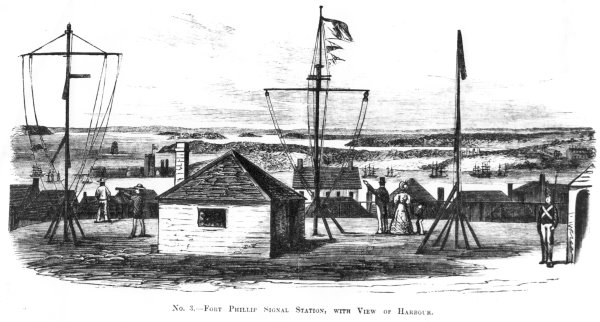Parramatta Signal Station
|
||||||||||
Governor Thomas Brisbane chose Government House, Parramatta, as his principal place of residence. He devolved a considerable amount of responsibility to the heads of departments in Sydney, stating he would visit Sydney every second Tuesday to interview the colonists. His life revolved around his family, and public duties became an intrusion.
 |
Commissioner Bigge in a letter to Governor Macquarie of 2 October 1820 recommended that a semaphore system be established between South Head and Sydney. The headquarters of the system was at Fort Phillip on Telegraph Hill and generally known as The Rocks overlooking Sydney Cove. The work was completed by July 1822.
Brisbane had the semaphore system extended to Parramatta to enable him to be aware of shipping movements in Sydney Harbour.
Signal stations were installed at three points along the Parramatta River - Bethlem Point (later translated into Bedlam Point) at present-day Gladesville; at One Tree Hill, in the Brush Farm region on the current site of Lauriston House Function Centre, corner of Marsden Road and Stewart Street, Ermington; and at Mays Hill in the heart of the Parramatta Township, near present-day Parramatta High School.
Construction of the various stations began in August and was completed by September 1824 using the traditional wooden vanes to convey the messages. They proved to be unsatisfactory and the system was upgraded, with the vanes being replaced with pennants. With this system, messages were conveyed by flags of different colours and shapes and could convey a deal of information very rapidly. Although there was some time spent raising and lowering the various flags to impart the message, the information was handed to the governor many hours earlier than if a rider had to carry it on horseback from Sydney to Parramatta. As part of the upgrade of the signal system, the One Tree Hill signal station was closed in 1829 and the Fort Phillip to Parramatta line closed in 1842 when the electric telegraph was introduced.
Trevor Patrick is a local historian of the north-west of Sydney, Australia. His latest book, In Search of the Pennant Hills, recounts some of these stories (and others) in more detail.